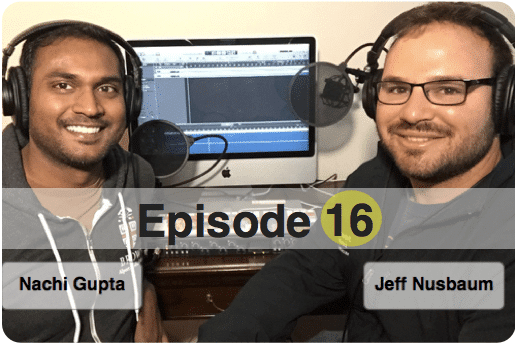Podcast Ep 16: In-Training Exam Review, Abdominal, Cardiovascular & More

What we think, we become
-Buddha
Welcome back to Episode 16! With the In-training Exam next week, we are doing things a little different this week. Instead of covering new material before the exam, we are launching three episodes, back to back, reviewing the most high-yield points that we have covered so far, organized by topic. We think this extra layer of spaced repetition will help you gain a few extra points during your test. We have set it up in a quiz format, so you can pause the podcast as you go along.
Now onto this week’s podcast
Abdominal Emergencies
- Small bowel obstructions are caused most commonly by postoperative adhesions followed by malignancy.
- Large bowel obstructions are caused most commonly by malignancy followed by volvulus.
- Reynolds’ pentad for acute cholangitis consists of fever, right upper quadrant pain, jaundice, altered mental status, and hypotension.
- The initial treatment for GERD should always begin with lifestyle and behavior modifications including weight loss, head of bed elevation, and avoiding eating prior to sleeping. If lifestyle modifications are not providing adequate relief, PPIs are the empiric treatment of choice for GERD.
- Untreated GERD can lead to Barrett Esophagus, which increases the risk for esophageal neoplasm.
Cardiovascular Emergencies
- Nitrates reduce both the preload and the afterload by dilating vascular smooth muscles. Avoid nitrates in inferior MIs and in those on phosphodiesterase inhibitors.
- The most common finding in an acute aortic dissection is hypertension.
- Capture beats are normal narrow supraventricular beats within a run of wide complex beats. Fusion beats occur when impulses from two different locations activate the ventricle. One impulse is typically ventricular and the other is supraventricular, resulting in a QRS complex with hybrid morphology of a sinus beat and an intraventricular beat.
- For hemodynamically stable patients, AVNRT can be treated with beta-blockers, calcium channel blockers, or, less commonly, digoxin. Unstable or refractory cases require cardioversion.
- The mnemonic FROM JANE (Fever, Roth’s spots, Osler’s nodes, Murmur, Janeway lesions, Anemia, Nail-bed hemorrhages, and Emboli), can be used to remember the findings associated with bacterial endocarditis.
- In IV drug users with endocarditis, the tricuspid valve is most commonly affected and Staph aureus is the most common bacteria isolated.
- In native valve endocarditis, the mitral valve is most commonly infected followed by the aortic valve.
- Strep bovis endocarditis is associated with colon cancer (remember: cancer in the colon, bovis in the blood).
- In cardiac arrest, AED use, early bystander CPR, amiodarone for shock-resistant ventricular tachycardia or ventricular fibrillation, therapeutic hypothermia, and cardiac catheterization for ventricular dysrhythmias, even in EKGs that do not meet STEMI criteria, have all been shown to improve outcomes.
- MAP = CO x SVR + CVP. Its’ more easily estimated by the formula MAP = ⅓SBP + ⅔DBP.
- The right coronary artery occlusion supplies the AV node in the majority of patients. Acute occlusion can lead to heart black.
- The six P’s of acute arterial occlusion are paresthesias, paralysis, pallor, pulselessness, poikilothermia, and pain out of proportion to exam. Paralysis and paresthesias require emergent surgical intervention.
- Acute arterial embolisms should be managed by embolectomy, whereas in situ thromboses may respond to anticoagulation.
- Left ventricular thrombus formation after an MI is the most common source of an arterial embolus.
Cutaneous Emergencies
- Escharotomies are performed along the medial and lateral aspects of both the upper and lower extremities.
- The Parkland formula = 4 x percentage burned x weight (in kg). Give the first half of the fluid over the first 8 hours and the second half of the fluid over the next 16 hours.
- Staph scalded skin syndrome is caused by an exotoxin. These patients will have a positive Nikolsky’s sign. Rupturing the bullae will not spread the toxin, as it is spread via the blood stream.
- Trousseau’s syndrome is a migratory thrombophlebitis associated with pancreatic cancer.
- Erythema nodosum is an inflammatory condition characterized by tender red-violet nodules under the skin. The most common cause is an infection but drugs can also cause erythema nodosum, with OCPs being the most common culprit. The treatment is NSAIDs for mild to moderate cases. Potassium iodine can be used in severe cases.
Endocrine Emergencies
- Sulfonylurea anti-hyperglycemia can cause recurrent episodes of hypoglycemia.
- In factitious hypoglycemia, C-peptide should be low and insulin levels should be high due to exogenous administration of insulin.
Environmental Emergencies
- Scorpion stings cause local redness and edema with a heightened sensitivity to touch in the area. You can also have numbness and weakness in the affected area. Systemic symptoms include fasciculations, disconjugate gaze, temperature reversal, and pancreatitis.
- Black widow spiders are found throughout the entire United States. They can be identified by the hourglass on their abdomen. In contrast, brown recluse spiders are found in the Midwest.
- Black widow spider bites cause a local papule with a halo. Severe systemic symptoms include a peritonitic abdomen, muscle fasciculations, and diaphoresis. Brown recluse spider bites cause a papule that later blisters and may necrose. Systemic symptoms include renal failure, pulmonary edema, and shock
- Pit viper snakebites cause local swelling and oozing from the wound. Severe envenomation can lead to a DIC-like coagulopathy and hemorrhagic bullae.
- Frostbite should be treated with immersion in a warm water bath at 37 to 39 degrees Celsius. Water at a higher temperature will warm no faster and cause increased pain and potentially tissue damage.
So, that’s it for part 1. Stay tuned for the remaining two parts. Was this review helpful? Do you want us to change anything? Send us your thoughts at roshcast@roshreview.com.
Until next time,
Jeff and Nachi
P.S. If you missed Episode 15, including arterial emboli, listen here.





Comments (0)